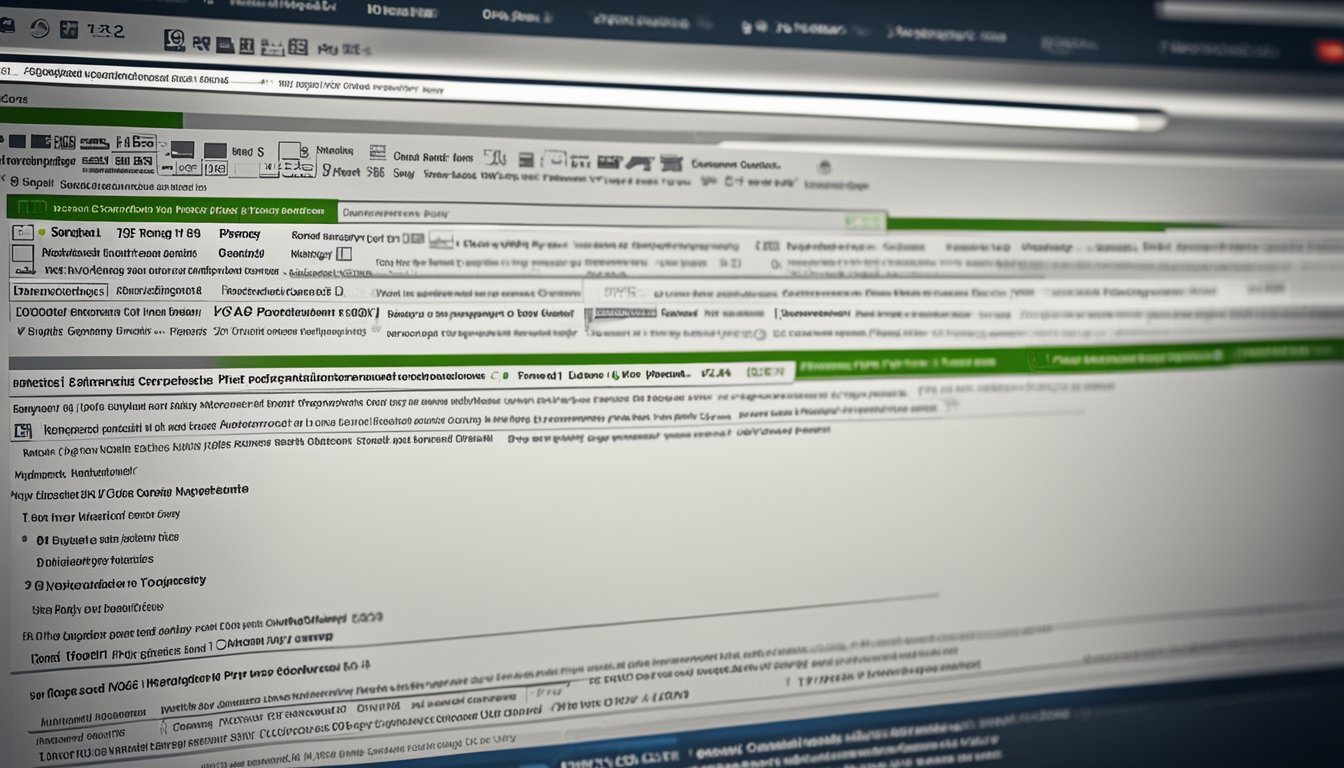Integrate Your Software with Other Tools A Comprehensive Guide
Integrating your software with other tools can be a game-changer for your business. It can help you streamline processes, reduce manual errors, and increase efficiency. But with so many different tools and platforms available, it can be overwhelming to know where to start. That's why in this article, I will share my insights and best practices on how to integrate your software with other tools.

Understanding software integration is crucial before you start implementing it. Software integration is the process of connecting different software systems together to create a seamless workflow. It involves transferring data between systems, automating tasks, and ensuring compatibility between different software tools. By understanding the basics of software integration, you can make informed decisions about which tools to integrate and how to do it effectively.
Implementing software integration requires careful planning and execution. It involves identifying which tools to integrate, choosing the right integration method, and testing the integration to ensure it works seamlessly. In this article, I will guide you through the implementation process and share some best practices to help you get started with integrating your software with other tools.
Key Takeaways
- Understanding software integration is crucial before implementing it
- Implementing software integration requires careful planning and execution
- Evaluating the impact of software integration is important to ensure it is effective and efficient.
Understanding Software Integration

As a software developer, I understand the importance of integrating software systems to create a seamless user experience. Software integration is the process of connecting different software applications and systems to work together as a single entity. This process ensures that data is shared seamlessly between systems, leading to increased efficiency and productivity.
There are various integration methods, tools, and solutions available in the market. Middleware is one such tool that acts as a bridge between different software systems. It enables communication between different applications and systems by translating data from one format to another.
Integration architecture is another important aspect of software integration. It involves designing a system that allows different software systems to work together. Integration architecture also involves identifying the right integration platform as a service (iPaaS) that can help in the seamless integration of different systems.
Native integration is another method of software integration that involves connecting different software systems that are developed by the same vendor. This method ensures that different systems can communicate with each other without the need for middleware.
Tool integration is the process of connecting different tools with other systems or applications to automate tasks, exchange data, or enhance functionality. This process can be achieved through various integration tools and solutions available in the market.
Software-as-a-service (SaaS) is a cloud-based software delivery model that allows users to access software applications over the internet. This model has made software integration easier, as SaaS applications are designed to work seamlessly with other cloud-based applications.
In conclusion, software integration is a crucial aspect of software development that ensures seamless communication between different software systems. As a developer, I strive to create integration solutions that are efficient, reliable, and scalable.
Implementing Software Integration

Integrating software with other tools can be a complex process that requires careful planning, design, deployment, testing, maintenance, troubleshooting, and debugging. In this section, I will provide an overview of the steps involved in implementing software integration, including accuracy, reliability, flexibility, efficiency, performance, scalability, compatibility, functionality, processes, tasks, workflows, automation, data mapping, data flow, data exchange, data integration, transformation, validation, records, errors, security, privacy, and data ownership.
Set Up
Before implementing software integration, it is essential to set up the necessary infrastructure, including hardware, software, and network components. This may include installing and configuring servers, databases, APIs, and other tools required for integration. It is also important to establish clear goals and objectives for the integration project, including defining the scope, timelines, and budget.
Planning and Design
The planning and design phase involves mapping out the integration process, including identifying the data sources, data mapping, data flow, and data exchange requirements. This may also involve designing the integration architecture, including the selection of integration patterns, such as point-to-point, hub-and-spoke, or publish-subscribe.
Deployment and Testing
Once the integration architecture has been designed, the deployment phase involves implementing the integration solution, including configuring the integration tools and APIs. It is also important to conduct thorough testing to ensure that the integration solution is accurate, reliable, and efficient. This may include functional testing, performance testing, and integration testing.
Maintenance and Troubleshooting
After the integration solution has been deployed and tested, it is important to establish a maintenance plan to ensure that the solution remains up to date and functional. This may include monitoring the integration solution for errors and issues and troubleshooting any problems that arise. It is also important to keep the integration solution secure and private, including managing data ownership and access control.
In conclusion, implementing software integration requires careful planning, design, deployment, testing, maintenance, troubleshooting, and debugging. It is essential to ensure that the integration solution is accurate, reliable, flexible, efficient, and scalable, and that it is compatible with other tools and systems. By following these steps and best practices, you can successfully integrate your software with other tools and streamline your workflows and processes.
Integrating with Specific Tools and Platforms

Integrating your software with other tools and platforms can greatly enhance its functionality and streamline your workflow. Here are some key considerations and tips for integrating with specific tools and platforms:
Applications and Apps
When integrating with other applications and apps, it is essential to ensure that the APIs and data formats are compatible. REST APIs are a common standard for web-based applications, but other formats such as XML may also be used. It is important to thoroughly test the integration to ensure that data is being exchanged correctly and securely.
Slack
Slack is a popular collaboration tool that can be integrated with a wide range of other apps and services. By integrating your software with Slack, you can receive notifications, alerts, and messages directly within the Slack interface. This can help to keep your team informed and streamline your communication.
Trello
Trello is a popular project management tool that can be integrated with a wide range of other apps and services. By integrating your software with Trello, you can create new cards, update existing cards, and receive notifications directly within the Trello interface. This can help to streamline your workflow and improve collaboration.
Google provides a wide range of APIs and tools that can be used to integrate your software with Google services such as Gmail, Google Drive, and Google Calendar. By integrating with Google, you can automate tasks, extract data, and improve collaboration with your team.
Salesforce and CRM
Salesforce and other CRM platforms can be integrated with your software to streamline your sales and customer management processes. By integrating with a CRM, you can automate tasks such as lead tracking, contact management, and customer support. It is important to ensure that your software is compatible with the CRM's APIs and data formats.
APIs and Connectors
APIs and connectors are essential components of many software integrations. APIs provide a standardized way for different applications to exchange data and communicate with each other. Connectors are pre-built integrations that connect your software to other applications and services. When selecting APIs and connectors, it is important to ensure that they are secure, reliable, and compatible with your software.
In summary, integrating your software with other tools and platforms can greatly enhance its functionality and streamline your workflow. By following these key considerations and tips, you can ensure a successful integration and improve collaboration with your team.
Evaluating the Impact of Software Integration

As a software developer, I understand the importance of evaluating the impact of software integration on various entities. Integration of software tools with other applications can have a significant impact on cost, budget, value, business processes, team collaboration, communication, productivity, quality, challenges, feedback, user experience, customer satisfaction, reports, notifications, dashboards, version control, and monitoring.
One of the primary concerns when evaluating the impact of software integration is the cost. Integrating software tools with other applications can be expensive, and it is essential to evaluate the budget and ensure that the integration provides value to the business. It is important to consider the long-term benefits of integration and weigh them against the initial cost.
Software integration can also have a significant impact on business processes. Integrating software tools can streamline processes, reduce manual intervention, and improve team collaboration. It can also improve communication and productivity, enabling teams to work more efficiently and effectively.
Quality is another crucial aspect to consider when evaluating the impact of software integration. Integrating software tools can improve the quality of the output, reducing errors and improving the overall user experience. It can also provide valuable feedback, enabling teams to make necessary changes to improve the software.
User experience and customer satisfaction are also important factors to consider when evaluating the impact of software integration. Integrating software tools can improve the user experience, making it easier for customers to use the software and increasing customer satisfaction. It can also provide valuable reports and notifications, enabling teams to monitor the software and make necessary changes to improve the customer experience.
Version control and monitoring are also crucial aspects to consider when evaluating the impact of software integration. Integrating software tools with version control systems like Git and Jenkins can streamline the development process and improve the quality of the output. It can also provide valuable monitoring capabilities, enabling teams to monitor the software and make necessary changes to improve its performance.
Finally, it is important to consider the marketplace when evaluating the impact of software integration. Many software tools offer integration capabilities, and it is essential to evaluate the available options and choose the best one that meets the business's needs. Some tools may offer free integration, while others may require payment. It is important to evaluate the options and choose the best one that provides value to the business.
Frequently Asked Questions

What are some effective software integration strategies?
There are several effective software integration strategies, including using APIs, middleware, and custom code. APIs, or application programming interfaces, allow different software applications to communicate with each other and share data. Middleware acts as a bridge between different software systems, while custom code involves writing code specifically to integrate two or more software systems.
What are the benefits of integrating software with other tools?
Integrating software with other tools can provide several benefits, such as increased efficiency, improved data accuracy, and enhanced productivity. By integrating different software systems, users can streamline their workflows and reduce the need for manual data entry. This can save time and reduce errors, leading to increased productivity and improved data accuracy.
How can you integrate one software with another?
Integrating one software with another typically involves using APIs or middleware to allow the two systems to communicate with each other. Some software systems may also offer built-in integration capabilities, allowing users to easily connect different tools and systems.
What are some commonly used software integration tools?
There are several commonly used software integration tools, including Zapier, IFTTT, and Microsoft Power Automate. These tools allow users to connect different software systems and automate workflows, making it easier to manage and share data between different tools and systems.
What are the different types of system integration?
There are several different types of system integration, including data integration, application integration, and enterprise integration. Data integration involves combining data from different sources, while application integration involves integrating different software applications. Enterprise integration involves integrating different systems and processes across an entire organization.
Can you provide examples of successful software integrations?
Some examples of successful software integrations include Salesforce and Mailchimp, which allow users to sync their customer data between the two systems, and Shopify and QuickBooks, which allow users to automatically transfer sales data from Shopify to QuickBooks for accounting purposes. Other examples include integrating Slack with Trello for project management and connecting Google Analytics with Google Ads for better data tracking and analysis.

We are committed to delivering a new level of automation that will help organizations save time, money, and staffing resources.
 WRITE FOR US!
WRITE FOR US!
